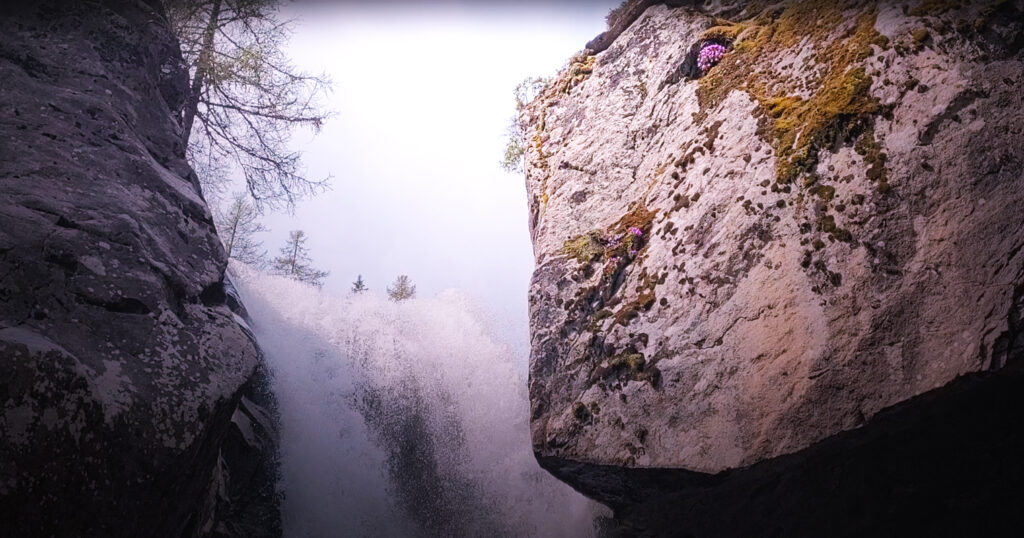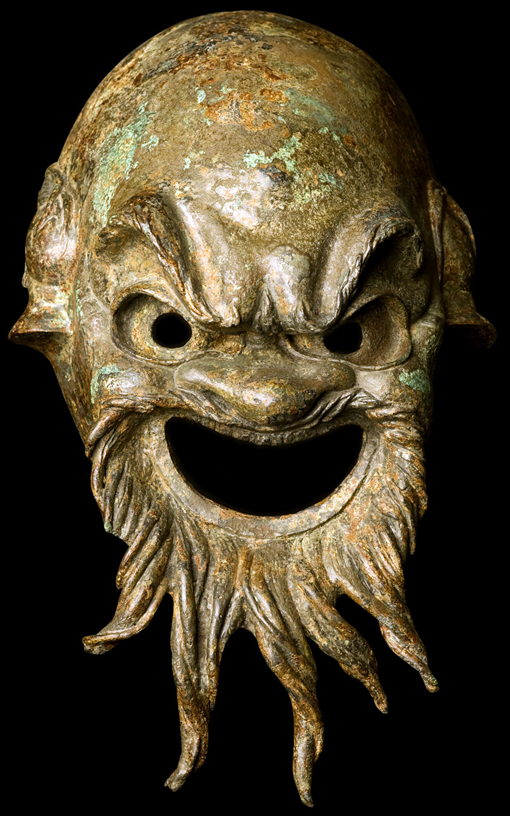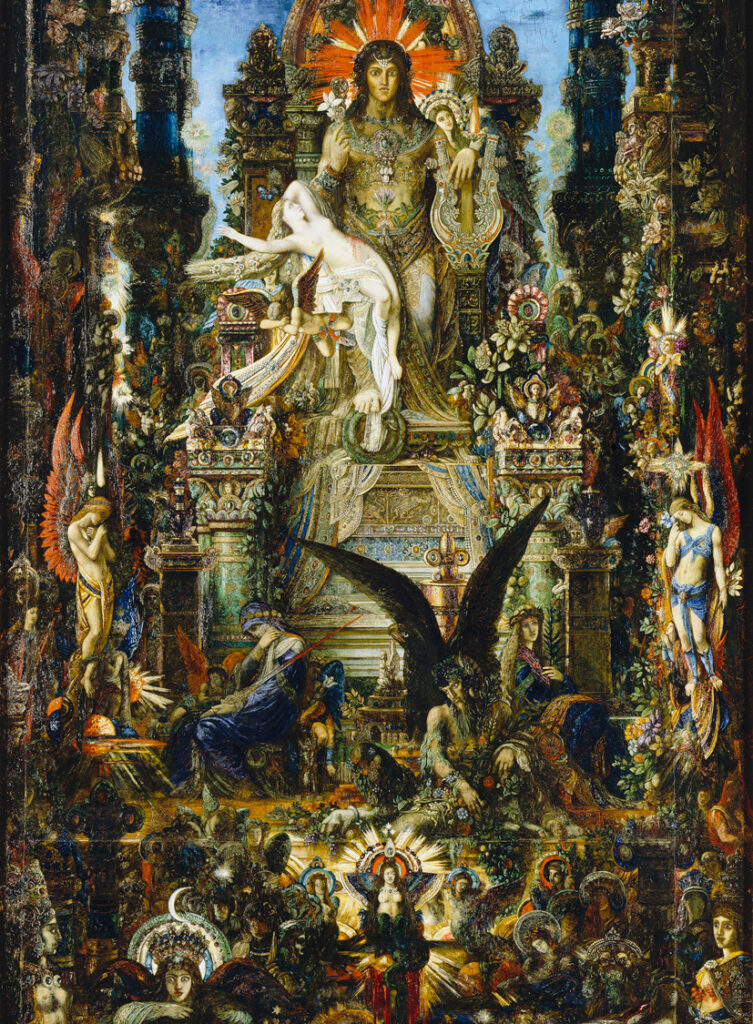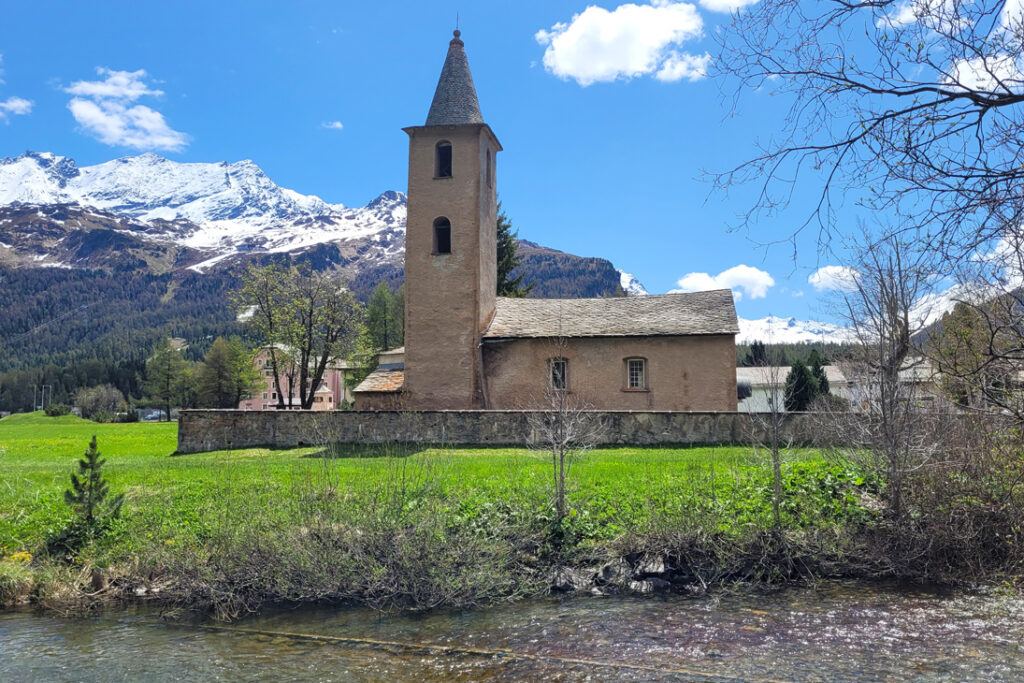
TWO cutout lakes, like feline eyes, lie side by side in the Swiss Upper Engadine: the Silsersee and the Silvaplanersee. Between them, on the bridge of the nose, sits the small village of Sils-Maria. And above, like phrenological bumps, frown the peaks of Piz Lagrev and Piz Polaschin in the Albula Alps. In winter the lakes freeze. In summer their moonstone blue mirrors the mountains. Sils-Maria sits officially at 5,935 feet above sea level. But in August 1881, the village’s most famous resident exaggerated that figure slightly, jotting in his notebook: ‘6000 feet above the sea and much higher still above all human things.’

The book belonged to the philosopher Friedrich Nietzsche. When people think of Nietzsche, they conjure up the image of a bushy Viking-style moustache, bristling and defiant, overhanging a mouth that spouts silly aphorisms about a race of supermen. The silly aphorisms we will come to. But first, the moustache.
It wasn’t a brief fad. In fact, he wore a moustache from age 21 until his death at 55 in 1900. Walrus moustaches were popular amongst military men in the 1860s, and Nietzsche indeed did voluntary military service in his early twenties. But such a look wasn’t in vogue in universities, although Nietzsche admired the moustache of a handsome older philologist, Curt Wachsmuth, calling it ‘bandit-like’. Members of the Polish aristocracy also favoured this type of moustache, and Nietzsche fancied himself as having noble ancestry. So the moustache was meant to convey confidence, gallantry, the swagger of a noble hero. In truth, it seems a different character entirely lurked behind it.

Lou Andreas-Salomé, Nietzsche’s friend and confidante, whom we met previously in connection with Rainer Maria Rilke at Duino Castle, wrote about Nietzsche:
‘The fine, extremely expressive lines around the mouth were almost hidden by a big, down-combed moustache; he had a soft laugh, a noiseless way of speaking, and a cautious, thoughtful way of walking, which caused a slight stoop in the shoulders.’ Lou describes his ‘delicately modelled ears . . . ears for hearing the unheard. His defective eyesight lent his features a very special kind of magic, for instead of reflecting changing impressions from outside, all they rendered was what was going on deep down within him.’
From many reports, Friedrich Nietzsche was entirely the opposite of what the moustache represented. In fact, he hints as much in his book Morgenröte (Morning Glow), completed just before his arrival at Sils-Maria: ‘Thus the gentlest and most reasonable of men, if he wears a big moustache, can sit in its shade and feel safe there—he will usually be seen as no more than the moustache’s accessory: military, quick-tempered, perhaps of a violent nature.’ Nietzsche wore the moustache for protection, to worn people off.
He had journeyed up to the Engadine that summer from the mountain resort of Recoaro in the Veneto, trying to escape the heat and thunderstorms. In Recoaro he had suffered from daily seizures and vomiting. He longed for a ‘land with a lot of shade, an eternally blue sky, an equally strong sea-wind from morning till evening, without thunderstorms . . .’ At the end of June 1881, deciding on the high Alps as the closest he would come to that dream, he boarded a train bound for St Moritz. A missed connection doubled the journey’s cost, and accommodation in St Moritz turned out to be more than he could afford. So he decided to take the stagecoach down the valley to the tiny village of Sils-Maria.
Nietzsche would fall in love with Sils-Maria, returning there every summer for six years. But after his first arrival from Recoaro a full week was necessary to recover. He found a room to rent over a grocer’s at a cost of one franc a day, and took his meals at the Hôtel Alpenrose next door. The house he lived in is now a museum, the Nietzsche-Haus.

He began to develop a routine. On days when his health allowed, he rose at first light, bathed and shaved at the washstand, drank a glass of milk, and immediately began work, writing in his room until mid-morning. Then he went for a walk.
Walking was Nietzsche’s salvation. ‘Do not believe any idea that was not born in the open air,’ he advised. He had always been afflicted by frequent migraine headaches with which long walks in the open air helped him cope. Unable to sleep, he often spent whole nights vomiting. He lived as a hermit, and did ‘ten hours a day of hermit’s walking . . . I wander here and there, alone like a rhinoceros.’
Behind the house was extensive pine forest. Sometimes he would go along one of the two lakes. As he walked, he made notes in a little notebook. He returned to Sils for a late lunch, usually steak followed by fruit—a great deal of fruit, reckoned by some villagers as the cause of his stomach troubles. In the afternoon, taking a threadbare jacket for the cool of evening and a grey-green parasol to shade his eyes, he set off again for a longer walk, perhaps to Val Fex and the glacier at the far end of the valley. At day’s end, he wrote up his thoughts, ate biscuits, more fruit, bread and honey, and drank pots of tea. Bedtime was around 11 pm.
That first August, however, walking beside Lake Silvaplana, Nietzsche had what he considered to be the most profound revelation of his life: ‘6000 feet beyond men and time. I was walking through the woods that day alongside Lake Silvaplana; I stopped not far from Surlei at a huge rock shaped like a pyramid. It was then that the thought struck me.’ (Ecce Homo)

It was a thought that was mind-altering, life-changing, and disturbing in its impact beyond any thought he had ever had before, as deeply disturbing as the great pyramidal rock must have been when it hit the waters of Lake Silvaplana.
At first sight, Nietzsche’s idea might seem like one more pointless philosophical thought experiment. But consider this: within only a few years, he suffered a complete mental collapse, arguably traceable to the influence of this idea.
‘On my horizon thoughts rise, and what thoughts!’ he wrote to a long-time friend on 14 August. ‘I am leading a very dangerous life, for my machine is one of those which may GO SMASH! The intensity of my sentiments makes me shudder and laugh—twice already I have had to stay in my room, and for a ridiculous reason; my eyes were inflamed, why? Because while I walked I had cried too much; not sentimental tears, but tears of joy; and I sang and said idiotic things, being full of a new idea which I must proffer to men . . .’

Here is how Nietzsche sets out his idea:
‘What if one day or night a demon were to creep into your loneliest loneliness and say: “This life, as you now live and have lived it, you must live again and innumerable times; and there will be nothing new about it, but every pain and every joy and every thought and sigh and everything unspeakably small or big in your life must return to you, all in the same order and sequence—even this spider and this moonlight between the trees, and this moment and I myself. The eternal hourglass of existence is turned again and again—and you with it, speck of dust!”’ (Fröhliche Wissenschaft)
Nietzsche called this notion die ewige Wiederkunft des Gleichen, the eternal Return of the Same. Its significance is often downplayed, so that it’s understood as merely representing a kind of time loop, as featured in the movie Groundhog Day. But that’s far from the case.

It would be unsurprising if Friedrich Nietzsche, lonely and rejected, beset by headaches and stomach cramps, were to grind his teeth in the face of having to live his life over and over again for all eternity. Yet Nietzsche’s very next sentence asks: ‘Or have you at one time experienced a tremendous moment when you would have answered him: You are a god and never have I heard anything more divine.’
Experiencing this ‘tremedous moment’ was Nietzsche’s reaction beside Lake Silvaplana. Perhaps the long brisk walk around the edge of the lake had supercharged his neurotransmitters. Perhaps an excited supramarginal gyrus was what made him sing, jump for joy and say idiotic things. He roundly declares:
‘I want to see the necessary as the beautiful. I want to be someone who makes things beautiful. Amor fati (love of fate): let that from now on be my love. I don’t want to wage war on what is ugly. I don’t want to accuse; I don’t even want to accuse those who accuse. Looking away will be my only negation. At all times hereafter I wish to be exclusively a yes-sayer.’ (Fröhliche Wissenschaft)
This sounds like ultimate mental health, not mental collapse. But, as Nietzsche must have suspected, the two are inextricably linked. This is true both in his philosophy and in his life. In Jenseits von Gut und Böse (Beyond Good and Evil), he writes: ‘A basic characteristic of existence may be that those who seek to know it fully will perish, meaning that strength of spirit should be measured according to how much of truth one can manage to bear.’
To fully understand eternal return’s significance for Nietzsche we need to dig into the idea’s origins.
In Die Geburt der Tragödie (The Birth of Tragedy) Nietzsche turns to an anecdote from Aristotle in which King Midas once asks Silenus, the drunken old tutor of the wine-god Dionysus, what is most desirable for people’s lives, and what they should most wish for. Silenus refuses to answer. Midas presses him. Silenus says: ‘Oh, wretched ephemeral race, children of chance and misery, why compel me to tell you what it would be wisest for you never to hear? What is best for you is utterly beyond your reach: it is not to be born, not to be, to be nothing. And second best is to die as soon as possible.’

Nietzsche’s philosophy starts from an awareness of existence as pure horror. Suffering is universal and unavoidable—Nietzsche had experienced plenty himself. All human culture, religions, customs, traditions are shock absorbers to protect against confronting horror. The shadow of death lies perpetually across our path, and the most we can do is to take Mark Twain’s advice: ‘Cheer up, the worst is yet to come!’
‘Now the Olympian magic mountain opens and shows us its roots. The ancient Greeks knew and felt the terrors and horrors of existence: only by interposing the shining dream-birth of the Olympian world between themselves and terror could they manage to live at all.’ (Die Geburt der Tragödie)
The ‘shining dream-birth of the Olympian world’ is Nietzsche’s way of describing the perspective of normal individual consciousness, what he calls ‘Apollonian’ consciousness, after the Greek god Apollo, the god of sculpture, rational thought and reason. Among the maxims of Apollo’s oracle at Delphi are: nothing in excess, know thyself, be sensible, obey the law. The Apollonian point of view reverses Silenus’ wisdom: ‘Avoid death at all costs. Worst is to die early, next worst—to die some day at all.’
The Apollonian worldview is a dream. It is Nietzsche’s analogy for the dream of our daily lives. He gives it a metaphysical character because he believes it is essentially supernatural: above nature. Apollo’s world is the world of Freudian sublimation, a projection of fantasy. Its mark is the setting of illusory boundaries by measurement and abstraction. Its rules and rituals keep us safe. Every time we lock a door, order off a menu, laugh at a joke, comb a moustache or fasten a seatbelt we are participating in those rituals. Apollo protects our children. We get pleasure from doing the right thing. Nietzsche uses Raphael’s Transfiguration to make his point:

‘Here we have presented, in the most sublime artistic symbolism, that Apollonian world of beauty and its substratum, the terrible wisdom of Silenus; and intuitively we comprehend their necessary interdependence.’
The lower half of the picture shows suffering, terror and bewilderment. ‘From this appearance now arises, like ambrosial vapour, a new visionary world of appearances, invisible to those wrapt in the first appearance—a radiant floating in purest bliss, a serene contemplation beaming from wide-open eyes.’
Apollo’s world culminates in the sanctity of the individual, the separation into personhood. But nothing here is true. It is all a lie. If we wake up to the lie, and ‘see into the true nature of things’, feel in our bones the tragedy of our situation, realise the trap we are in, accept there’s no escape and nothing we’re able to change, only then can real authenticity of consciousness be possible. But what does that even mean? The paradox remains that such consciousness is inaccessible to the human ego as it’s normally structured, and changing things would entail catastrophic mental upheaval.
The greatest lie to expose of course is the one about God, which led Nietzsche to make his most famous pronouncement: ‘God is dead. God remains dead. And we have killed him. How shall we comfort ourselves, the murderers of all murderers?’ (Fröhliche Wissenschaft)
The Greeks had another god of art, Dionysus. Dionysus’ world opposes that of Apollo. Nietzsche draws a physiological distinction between the two. The Apollonian world is a world of dreams, the Dionysian is a world of drunkenness. Dionysus is the god of music, of ecstatic drunken excess. What Apollo has divided, Dionysus seeks to reunite: male and female, self and other, life and death. Dionysus rules in what Freud called the id. The id is ‘all that the ego is not, a chaos, a cauldron of seething excitement’.
‘Flowers and garlands bedeck the chariot of Dionysus; panthers and tigers pass beneath his yoke. Transform Beethoven’s Hymn to Joy into a painting; let your imagination conceive the multitudes bowing to the dust, awestruck then you will be able to appreciate the Dionysian . . . Now, with the gospel of universal harmony, each one feels himself not only united, reconciled, blended with his neighbour, but as one with him; he feels as if the veil of Maya had been torn aside and were now merely fluttering in tatters before the mysterious Primordial Unity.’ (Die Geburt der Tragödie)

The Primordial Unity was what Nietzsche wanted to restore. The place he found the two worlds of Apollo and Dionysus given equal weight was in Greek tragedy, where the Apollonian protagonist must face chaos and injustice because of some character flaw not of his or her own making. Hamlet, Nietzsche’s tragic hero prototype, comes up against existential horror in the figure of his murdered father’s ghost. Hamlet’s inaction to seek revenge is not mere procrastination. Much more terrifyingly, he realises that no authentic act is possible. Nothing can be done. Ordinary reality nauseates him. Despair leads to madness, madness to frenzy, and the gate to the Dionysian underworld opens.
‘In the consciousness of the truth once perceived, man now sees everywhere only the terror or the absurdity of existence; now he can understand the symbolism of Ophelia’s fate; now he can realise the wisdom of the sylvan god Silenus: and he is filled with loathing.’ (Die Geburt der Tragödie)
In Classical Greek tragedy it was the music of the satyric chorus, the ecstatic dithyramb, that presented the Dionysian worldview, and swept up the audience in a vicarious experience of the true ground of existence. ‘For we must realise that in the ecstasy of the Dionysian state, with its annihilation of the ordinary bounds and limits of existence, there is contained a lethargic element, in which are submerged all past personal experiences. It is this gulf of oblivion that separates the world of everyday from the world of Dionysian reality.’

We have wandered a long way from Nietzsche’s earth-shaking idea beside the summer shore of Lake Silvaplana. We have wandered, much as he himself was wont to do, lost in thought.
What was it about the Eternal Return of the Same that so moved him? Nietzsche was very familiar with the dictum of Heraclitus: ‘And what dwells in us is always one and the same: living and dead, awake and sleeping, young and old. For this is wrapping around that and that back and wrapping around this.’
My own feeling is that the idea, not as thought experiment but as a genuine possibility, affirmed for Nietzsche the Primordial Unity, the Dionysian single consciousness, glimpses of which he came to value more and more and which eventually carried him away.
It is this consciousness that we can never escape. For we are it. We are the double illusions of living it and knowing it, or rather, it lives and knows us. It is the continuity of this singular consciousness, no matter how identities may change, that remains ceaselessly always aware. Of its own nature, this changeless persistence, this sameness returning forever, is the perfect acceptance of suffering and indistinguishable from the suffering of each life-death-bound sentient creature. It is consciousness tautologically indistinguishable from existence—being brought into being by being.
And death provides no escape. The ceaseless abidance of consciousness, other than which we have never known and can never know, goes on. Perhaps it was this last realisation that was the most terrible for Nietzsche, and what brought him finally to his knees, embracing the neck of an abused horse in a street in Turin.
“All things are entangled, ensnared, enamoured; if you ever wanted one thing twice, if you ever said, ‘You please me, happiness! Abide, moment!’ then you wanted all back . . . For all joy wants—eternity.” (Also Sprach Zarathustra)
